Transcription of Fabry-Perot temperature dependence and surface-mounted ...
1 Fabry-Perot temperature dependence and surface- mounted optical cavities Richard W. Fox National Institute of Standards and Technology, 325 Broadway, Boulder, CO USA 80305 ABSTRACT Factors that contribute to the temperature dependence of a resonant frequency in a low-expansion optical cavity are discussed, including deformation at the cavity ends due to different coefficients of thermal expansion (CTE) of the spacer, optically-contacted mirror substrate and coating. A model of the temperature dependence is presented that incorporates finite-element-analysis of the cavity ends. A measurement of frequency versus temperature of a cavity mode is used along with the model to deduce a spacer s CTE versus temperature profile. The measured profile correlates very well with a separate experiment utilizing a temporary surface- mounted Fabry-Perot cavity fabricated on the outside of the spacer with hydroxy-catalysis bonding.
2 Keywords: Fabry-Perot , resonator, hydroxy-catalysis bonding 1. INTRODUCTION Passive optical cavities are used for many applications such as optical spectrum analyzers, spectral filters and for laser stabilization. In terms of applications requiring stability, using a cavity as a reference for a high quality stabilized-laser system is perhaps the most demanding. Extremely narrow spectral linewidth atomic resonances ( Hz level) that are the basis for modern atomic clocks must be probed with beams that are even narrower to take advantage of the potential stability. These spectrally pure lasers are realized by Pound-Drever-Hall (PDH) frequency locking1 to a Fabry-Perot reference cavity in a vacuum chamber. The reference cavities have improved markedly over the years with the need for higher stability. This paper begins with a brief overview of reference cavity technology and identifies the temperature dependence of a cavity s resonances as a performance issue that generally could be improved.
3 A related problem is that while the CTE of commercial low-expansion glass used in cavities is relatively small, the uncertainty in the CTE is too large to implement temperature independent designs at specified temperatures . Very stable Fabry-Perot cavities are conventionally fabricated by optically contacting dielectric-coated mirrors with a flat and polished annular mounting surface onto the polished ends of a glass spacer. Exceptionally low-loss mirrors made from ion-beam-sputtered (IBS) films of Ta2O5, SiO2 and other materials have made possible cavity finesses exceeding 105. Thus cavities with lengths on the order of 10 cm can exhibit line-widths less than 10 kHz. A shot-noise-limited PDH locking system can tightly lock the frequency of a laser to a small fraction of the cavity resonance, providing a laser spectrum usually limited by vibration-induced length changes of the cavity, even with the cavities on isolation In recent years much progress has been made in reducing vibration-induced length changes by ingenious mounting approaches that effectively cause the mirrors to move in the same direction when accelerations are ,4,5 Reductions of the resonant frequency response to vertical and horizontal vibrations by a factor of 1000 and 30 respectively have been demonstrated in a horizontally- mounted temperature fluctuations also affect a reference cavity s fractional frequency stability, as nominally / = - L/L.
4 To reduce the fluctuations, blackbody shielding surrounding the cavity, and drift subtraction with an acousto-optic modulator are often employed. Cavity construction with a ULE or TSG glass7, or glass-ceramic spacer and optically contacted mirrors results in a relatively small temperature dependent fractional frequency change ( / ) near room temperature , typically within the range of a few parts in 108 per K. Turning our attention to ULE or TSG, for a given sample near room temperature the CTE (or (T)) averaged along a length exhibits a positive and somewhat linear slope with temperature , crossing CTE = 0 at some temperature Ts that varies from sample to sample. Consequently, versus temperature , the length of the glass spacer undergoes a minimum at Ts. A measurement of an optical mode s resonance- frequency versus temperature will show a near parabolic response with a frequency maximum at the so-called turning point (although not necessarily at Ts due to end effects as will be discussed later).
5 In several works it has been noted that the temperature independent point occurred at a significantly different temperature than expected from the spacer glass ,9,10 This impacts the thermal design of the vacuum system to minimize frequency drift. Clearly it would be useful to specify an optical cavity s turning point with at least modest accuracy in advance of it s installation in a vacuum chamber. This will be especially important for smaller portable systems that are constrained by power, weight and space. The main focus of this paper is to report progress toward the ability to fabricate reference cavities with the first order temperature independence point known by design. First, a model of the resonant frequency versus temperature is presented that includes temperature -change-induced deformation at the cavity ends and other factors that cause temperature dependence .
6 Structural finite-element analysis is incorporated into the model in an analytical fashion. Secondly, even with a valid model in hand we still need a means to obtain low expansion glass with a known (T) characteristic. The tolerance of (T) that commercially available glasses exhibit is simply too wide. A means to test potential glass spacer pieces by building temporary surface- mounted cavities on fine ground glass is proposed and demonstrated. This introduction would be incomplete without noting that even with a cavity temperature -stabilized at the turning point, the frequency fluctuations are still temperature dependent for several reasons. There are temperature dependent fluctuations of the cavity length attributed to Brownian Secondly, laser power that is absorbed in the coatings and substrates causes length changes through the material CTE.
7 This dynamic effect has been investigated both theoretically12 and experimentally13. Previous literature As will be discussed below, mirror substrates constrained by an optical contact to a spacer will cause a temperature dependent deformation of the cavity ends due to differential expansion between the spacer, substrate and coating materials. The differential expansion of a specially shaped fused silica mirror on a sapphire spacer has been analyzed and shown to move the temperature independent point of the cavity, allowing the turning point to be tuned by selecting the mirror And the possibility of differential expansion between the substrates and spacer influencing the cavity length has been mentioned by many authors previously ( , ref 10). However, to this author s knowledge a general treatment applicable to all mirror and spacer geometries that allows end deformation to be included in the cavity s temperature dependence has not been discussed.
8 2. CAVITY temperature dependence The description of the temperature dependence of the resonance frequency is developed by starting with the phase accumulated in one round-trip of a cavity of length l and equating this to an integer multiple of 2 : ml 2222= . (1) The length l is defined as the physical distance between the dielectric mirror surfaces , is the wavelength in the medium, and is the phase-shift upon reflection from the coatings (both mirrors assumed to be the same). is the phase difference between the plane wave propagation given in the first term and the actual Gaussian beam propagation. Siegman15 gives a close approximation of in terms of the cavity geometry, )1(cos)1(21 Rlqp ++= , (2) where p and q are transverse mode indices and R is the radius of curvature. Solving Eq.
9 (1) for the frequency of the cavity resonance in vacuum one finds that ).22(2 ++=mlc (3) Taking the derivative of Eq. (3) with respect to temperature for l << l results in ,)22(2)1)(()(TTTlclTTlTTo + + = (4) where T = T-To. Eq.(4) gives the expected resonance frequency at some temperature T as a function of the resonance frequency at an arbitrary temperature To. The second term is dominated by the change in the coating phase shift, as / T >> / T. The change of with temperature can be estimated from the slope of the spectral phase shift upon reflection and the temperature response of the high-reflectivity mirror s band-pass. The mirrors used in the experiments to be described were high-reflectivity visible band (centered at 578 nm) IBS coatings on low expansion substrates. At the measurement wavelength of 633 nm, / T mr/K.
10 The corresponding frequency shift depends on the free-spectral-range (FSR), and the cavities described are about 10 cm long. The frequency shift contribution from the last term (approximately -95 kHz/K) is small in comparison to the measured frequency shift that will be shown below. As the temperature changes uniformly, the cavity s physical length will change due to the spacer expansion or contraction but there are other factors that cause the mirror spacing to change. The elastic modulus and Poisson s ratio of fused silica (the primary constituent of ULE and TSG) are both slightly temperature dependent (~ ). This may translate to a temperature dependent change in the cavity length under gravity depending on how the cavity is supported. And a gradient in the spacer CTE that is transverse to the optical axis would cause the spacer to bend with temperature .
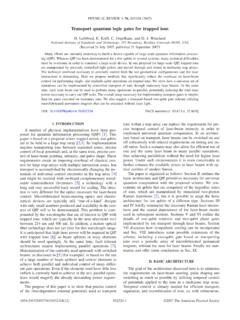


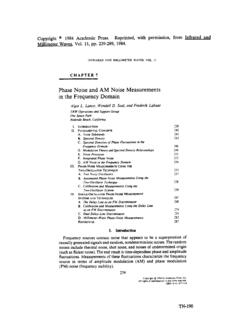


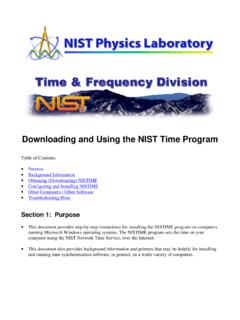
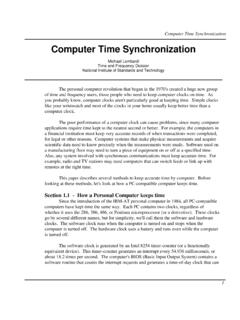
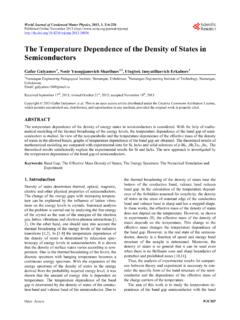



![C = Q/ T = dQ/dT [J/deg] - University of Virginia](/cache/preview/a/f/5/8/1/b/f/3/thumb-af581bf37b8258665c1595c6c7b2f7a3.jpg)




